France
France is a unitary state composed of municipalities (communes), departments (départements) and regions (régions).
CEMR in France – French Association of the Council of European Municipalities and Regions (www.afccre.org).










Local governments
The municipal council (Conseil municipal) is composed of councillors elected on a closed list model, by direct universal suffrage for a six-year term. In municipalities with 1,000 inhabitants and over, elections are based on a closed proportional list and two rounds of voting model, with a majority bonus granted to the list that comes first. This deliberative assembly is headed by the mayor.
The mayor (maire) and his/her deputies represent the municipality's executive branch. The mayor and the deputy mayors are elected by and from within the municipal council for a six-year mandate. The mayor and by delegation the deputy mayors are in charge of the municipal administration.
The municipality is since 2015 the only tier of local government which benefits from a general competences clause: they can intervene over and above their competencies in all fields of local interest.
Since 2014, all municipalities are part of an intercommunal structure. The total number of intercommunal structure is 1253 (1st January 2021). These structures have competences allocated to them by the municipalities on a voluntary basis, or directly imposed by law.
There are different types of intercommunal structures:
- The metropolitan authorities (Métropoles) have a minimum population of 400,000 inhabitants, and/or a capital city of a region and an employment area of more than 400 000 inhabitants: 21
- The urban authorities (Communautés urbaines) have a minimum population of 250,000 inhabitants: 14
- The conurbation authorities (Communautés d’agglomération) have a minimum population of 50,000 inhabitants with a urban centre of more than 15.000 inhabitants: 223
- The rural authorities (Communautés de communes) have a minimum population of 15,000 inhabitants: 995
The City of Paris is both a department and a municipality. Lyon Metropole has also a specific status as it has the competences of the department on its territory.
-
Traditional competences
- Registry office functions
- Organisation of elections on behalf of the State
- Protecting local public order
- Maintenance of municipal roads
- Land development and planning
Core decentralised competences
- Urban planning
- Education: kindergartens and elementary schools’ buildings construction and maintenance
- Social action
- Environment: water supply and sanitation, waste management
- Local roads
- Transport
- Culture
- Sports









Intermediary governments
The county council (Conseil départemental) is the department's deliberative body. It is composed of members elected by direct universal suffrage for a six-year term. The council elects its president among its members and is composed of specialised committees. The county councils are subdelegate managing authorities of the European social funds (ESF). Since a reform in 2014, the delegates are elected as a gender balanced duo so that each council is composed of the same number of men and women.
The president of the council is the department's executive authority. He/she is assisted by a permanent committee composed of vice-presidents and members of the different political parties.
-
- Social and health action: childhood, people with disabilities, senior inhabitants, social care
- Education: junior secondary schools building and maintenance
- Culture and tourism
- Safety: fire departments and emergency services, risk-prevention
Regional governments
The regional council (Conseil régional) is the deliberative body of the region. It is composed of regional councillors elected by direct universal suffrage for a six-year term. The regional council elects its president from among its members. Since 2014, regional councils are the managing authorities of the major part of the European structural funds, instead of the State.
The permanent committee is the region’s deliberative body, which assists the council in the execution of some of its competences. The vice-presidents are members of the permanent commission and the opposition is represented by proportionality.
The president and the vice-presidents are elected from among the members of the regional council for a six-year period. They are the region's executive body and are at the head of the regional administration. The president's functions are similar to those of the president of the county council.
-
- Economic development
- Territorial development and planning
- Transport
- Education: senior secondary schools
- Vocational education and adult permanent education. planning and environment
- Culture
- Tourism
Other Governments
Territories with specific status
Corsica has a specific status and represents a self-governing authority with specific institutions.
The European community of Alsace (la collectivité européenne d’Alsace) replaced the departments of Haut-Rhin and Bas-Rhin. Created by a law of August 2, 2019, this community falls under the legal category of departments but it has specific competences. This is particularly the case in the area of cross-border cooperation.
Overseas communities
Overseas departments and regions (DOM and ROM) are European outermost regions.
Since December 2015, there are two additional Overseas Territories, which combine the competences of overseas departments and overseas local authorities.
New Caledonia, Saint Barthélemy, Saint-Pierre-et-Miquelon, Wallis-et-Futuna, Polynésie française, and the Territory of the French Southern and Antarctic Lands (TAAF) are Overseas Countries and Territories (Pays et Territoires d’Outre Mer, PTOM)
